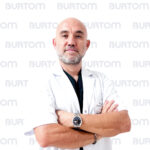
Understanding Jaw Joint Disorders: Causes, Symptoms, and Treatment Options

Jaw joint disorders, also known as temporomandibular joint (TMJ) disorders, encompass a range of conditions affecting the jaw joint and surrounding muscles. These disorders can cause pain, stiffness, clicking or popping sounds, and difficulty with jaw movement, impacting daily activities such as eating, speaking, and yawning. Understanding the causes, symptoms, and treatment options for jaw joint disorders is essential for effective management and relief of symptoms.
1. Causes of Jaw Joint Disorders:
- Trauma: Injury to the jaw joint, such as a blow to the face or whiplash injury, can lead to the development of TMJ disorders.
- Bruxism: Clenching or grinding of the teeth, especially during sleep, can put excessive strain on the jaw joint and surrounding muscles.
- Arthritis: Degenerative joint diseases such as osteoarthritis or rheumatoid arthritis can affect the jaw joint, leading to inflammation and pain.
- Malocclusion: Misalignment of the teeth or jaw can alter the normal function of the jaw joint and contribute to TMJ disorders.
2. Symptoms of Jaw Joint Disorders:
- Jaw Pain: Persistent or recurring pain in the jaw joint or surrounding muscles is a common symptom of TMJ disorders. The pain may be localized to the joint or radiate to the face, ear, neck, or shoulders.
- Clicking or Popping Sounds: Audible sounds, such as clicking, popping, or grating, may occur during jaw movement, indicating dysfunction of the joint.
- Limited Jaw Movement: Difficulty opening or closing the mouth fully, as well as a sensation of jaw locking or stiffness, may occur in individuals with TMJ disorders.
- Muscle Tension: Tightness or tenderness in the jaw muscles, particularly upon waking or after prolonged jaw use, is often associated with TMJ disorders.
3. Diagnosis and Evaluation:
- Clinical Examination: A thorough evaluation of the jaw joint and surrounding structures, including palpation of the joint, assessment of jaw movement, and examination of dental occlusion, is essential for diagnosing TMJ disorders.
- Imaging Studies: X-rays, MRI, or CT scans may be ordered to visualize the internal structures of the jaw joint and rule out other conditions such as fractures or tumors.
4. Treatment Options for Jaw Joint Disorders:
- Conservative Management: Initial treatment typically involves conservative measures such as resting the jaw, applying heat or ice packs, and avoiding hard or chewy foods.
- Medications: Pain relievers, muscle relaxants, or anti-inflammatory drugs may be prescribed to alleviate pain and reduce muscle tension in the jaw.
- Occlusal Appliances: Custom-made oral appliances, such as splints or mouthguards, may be recommended to stabilize the jaw joint and prevent teeth grinding or clenching.
- Physical Therapy: Stretching exercises, massage therapy, and modalities such as ultrasound or electrical stimulation can help improve jaw mobility and reduce muscle tension.
- Lifestyle Modifications: Stress reduction techniques, relaxation exercises, and dietary changes may help alleviate symptoms and prevent exacerbation of TMJ disorders.
5. Surgical Interventions:
- Arthrocentesis: Injections of sterile fluid into the joint space can help flush out inflammatory byproducts and reduce pain and swelling.
- Arthroscopy: Minimally invasive surgery using a small camera and instruments inserted into the joint can remove adhesions, debris, or damaged tissue.
- Open Joint Surgery: In severe cases of TMJ disorders resistant to conservative treatment, open joint surgery may be necessary to repair or replace damaged joint structures.
6. Prognosis and Outlook:
- With proper diagnosis and management, the majority of individuals with TMJ disorders experience improvement in symptoms and quality of life.
- Multidisciplinary approaches, including collaboration between dentists, oral surgeons, physical therapists, and pain specialists, are often beneficial in optimizing treatment outcomes.
Conclusion: Jaw joint disorders, or temporomandibular joint disorders, encompass a range of conditions affecting the jaw joint and surrounding muscles. By understanding the causes, symptoms, and treatment options for TMJ disorders, individuals can take proactive steps to manage symptoms effectively and improve jaw function and quality of life.
Similar Interests and Treatments

Orthopedic Rehabilitation
Explore the essential aspects of orthopedic rehabilitation, including treatment modalities, goals, and outcomes, to understand how it can help individuals recover from musculoskeletal injuries and conditions.
Neurological Rehabilitation
Learn about the fundamental principles, treatment modalities, and benefits of neurological rehabilitation for individuals with brain or nervous system injuries or diseases. Discover how physical therapy, speech therapy, occupational therapy, and psychological support play essential roles in improving functional impairments and enhancing quality of life.
Robot Therapy in Rehabilitation
Explore the principles, advancements, and applications of robot therapy in rehabilitation, highlighting its potential benefits for patients undergoing recovery. Discover how robotic devices assist individuals in regaining mobility, improving motor function, and enhancing overall quality of life following injury or illness.
Posture Exercise
Learn about the significance of posture exercises in improving body alignment, strengthening muscles, and promoting overall health and well-being. Discover the benefits of posture exercises and how they contribute to alleviating pain, preventing injury, and enhancing body awareness.
Clinical Pilates
Discover the benefits of clinical Pilates for improving core strength, flexibility, and overall physical function. Learn how mindful movement, breathwork, and personalized instruction can support rehabilitation, injury prevention, and lifelong health and wellness.
Gait Analysis (Foot Balance)
Explore the benefits, process, and applications of gait analysis in physical therapy and rehabilitation. Learn how this comprehensive assessment tool helps diagnose, treat, and prevent musculoskeletal and neurological conditions.
Therapeutic Electrical Stimulation (TES)
Discover the diverse applications, benefits, and safety considerations of therapeutic electrical stimulation (TES) in physical therapy and rehabilitation. Learn how TES can help manage pain, promote muscle strengthening, aid in rehabilitation, facilitate wound healing, and reduce edema while ensuring patient safety and optimal treatment outcomes.
Traction Therapy
Explore the mechanisms, benefits, and applications of traction therapy in physical therapy and rehabilitation, along with safety considerations for individuals with musculoskeletal conditions.
Ultrasound Physical Therapy
Learn about the benefits, applications, and safety considerations of ultrasound therapy in physical rehabilitation. Understand how ultrasound waves can promote tissue healing, reduce pain, and improve function in musculoskeletal conditions.
CGF Stem Cell Therapy (CGF-CD34)
Explore the potential of CGF Stem Cell Therapy in physical therapy and rehabilitation, its mechanism of action, applications, benefits, risks, and considerations for patients seeking regenerative treatment.
Theraband Treatment
Learn about mobilization and manipulation therapy, including its benefits, techniques, indications, contraindications, and safety considerations for effective musculoskeletal rehabilitation.
Mobilization and Manipulation Therapy
Learn about mobilization and manipulation therapy, including its benefits, techniques, indications, contraindications, and safety considerations for effective musculoskeletal rehabilitation.
Paraffin Wax Bath Therapy
Discover the benefits of paraffin wax bath therapy for pain relief, joint mobility, and skin health. Learn about the procedure, safety considerations, and how this therapy can improve your overall well-being.
High-Intensity Laser Therapy (HILT)
Discover the benefits, mechanism of action, applications, and safety considerations of High-Intensity Laser Therapy (HILT) for pain relief and tissue healing.
TENS (Electrotherapy)
Learn about Transcutaneous Electrical Nerve Stimulation (TENS) therapy, including its mechanism of action, effectiveness, applications, and safety considerations.
Schroth Treatment
Discover how Schroth Treatment offers holistic solutions for scoliosis management through postural correction, breathing techniques, and targeted exercises. Learn about its evidence-based approach and individualized treatment plans for better spinal health and overall well-being.
Inductive Therapy
Explore the benefits of Magnetic Inductive Therapy (MIT) in managing chronic pain, promoting tissue regeneration, and enhancing healing. Learn about its mechanisms, applications, and evidence-based benefits in various medical conditions.
Whirpool (Swirl Bath)
Explore the benefits, applications, techniques, and considerations associated with whirlpool treatment in physical therapy and rehabilitation. Learn how this therapeutic modality offers pain relief, improves circulation, promotes muscle relaxation, aids wound healing, and enhances psychological well-being for individuals recovering from musculoskeletal injuries and conditions.
Medical Massage
Discover the benefits of medical massage in physical therapy and rehabilitation. Learn about its applications, techniques, and how it aids in pain relief, mobility improvement, and overall well-being.
Interferential Current (IFC) Therapy
Learn about the benefits, process, and effectiveness of Interferential Current (IFC) therapy for pain management and rehabilitation. Discover how this non-invasive electrotherapy treatment can help relieve pain, reduce inflammation, and promote healing.
Extracorporeal Shock Wave Therapy
Learn about the benefits, procedure, expected outcomes, and potential risks of Extracorporeal Shock Wave Therapy (ESWT) as a non-invasive treatment option for various musculoskeletal conditions.
Get a Free Second Opinion
Experienced Burtom Medical Team is Ready to Help

I consent to Burtom Health Group using my aforesaid personal data for the purposes described in this notice and understand that I can withdraw my consent at any time by sending a request to info@burtom.com.











